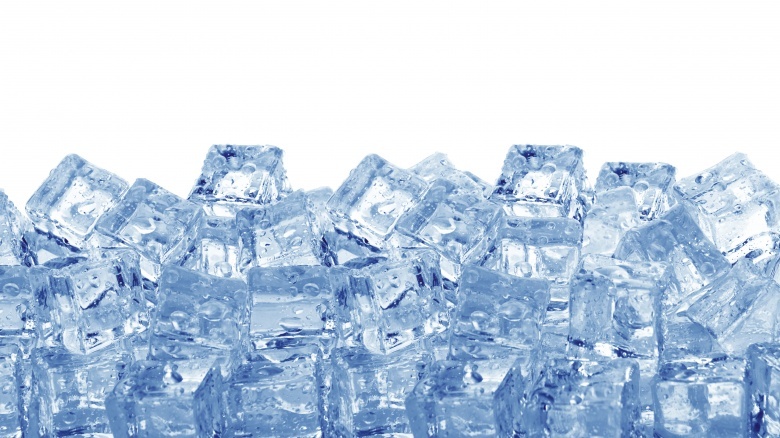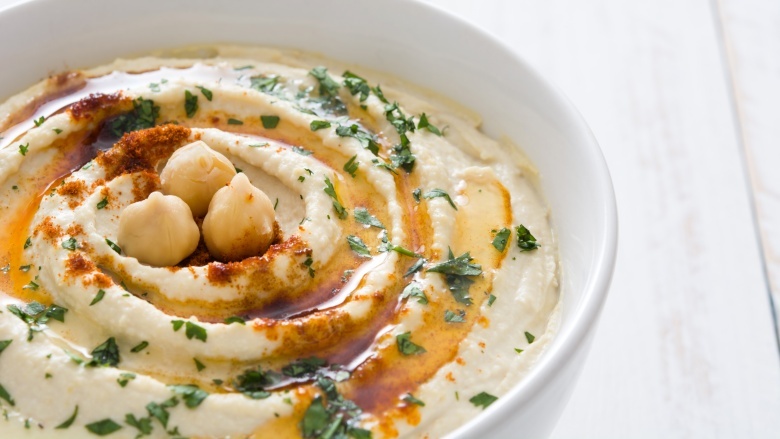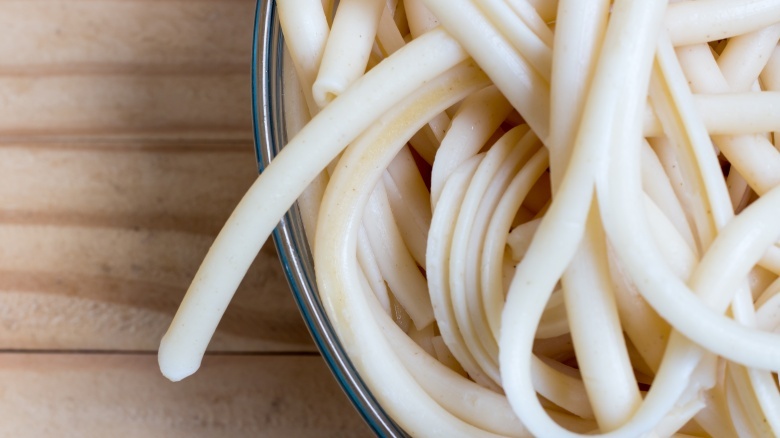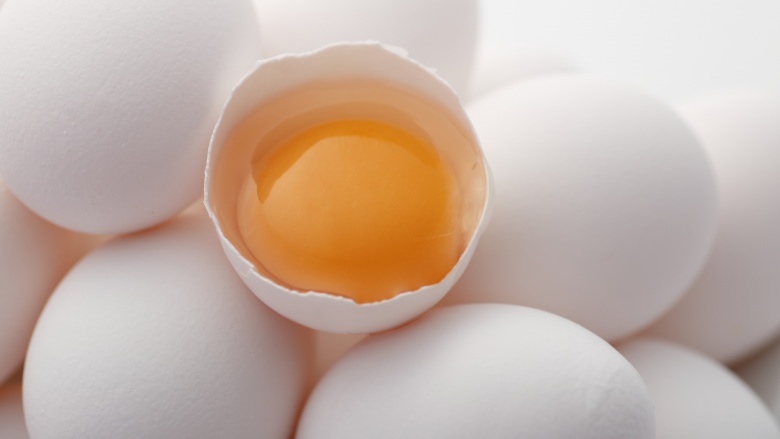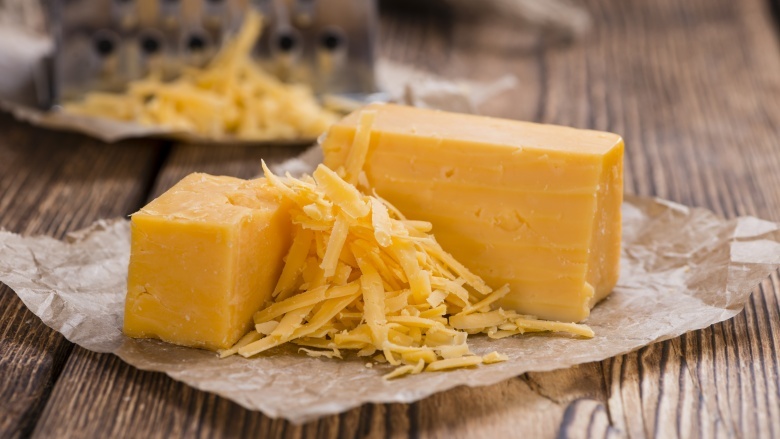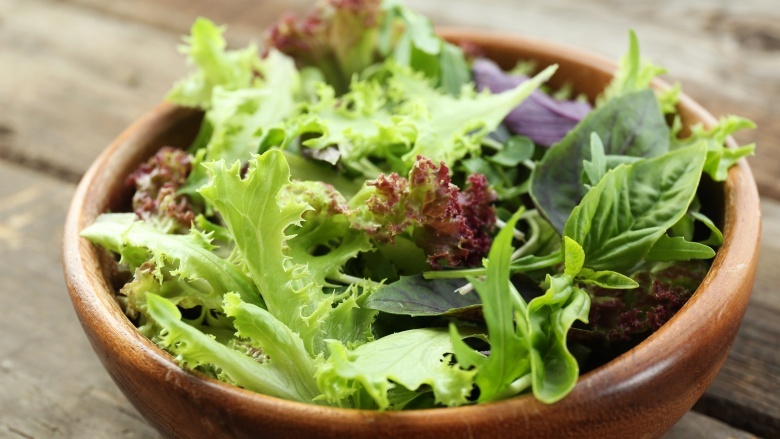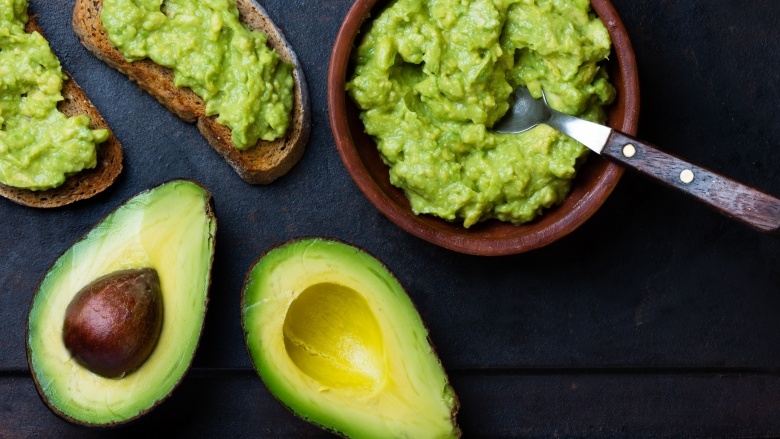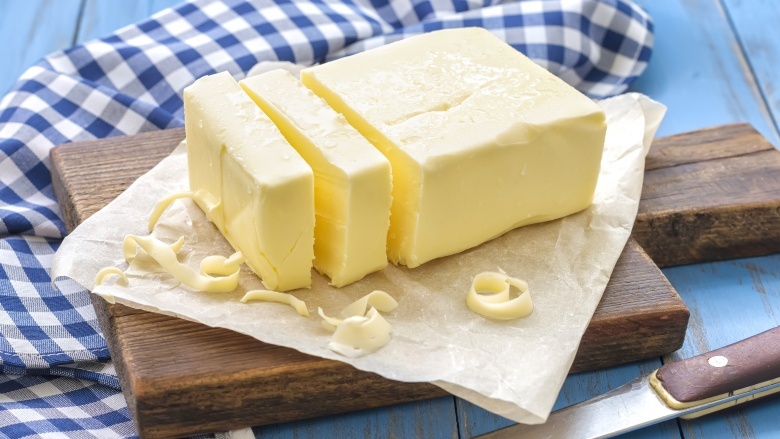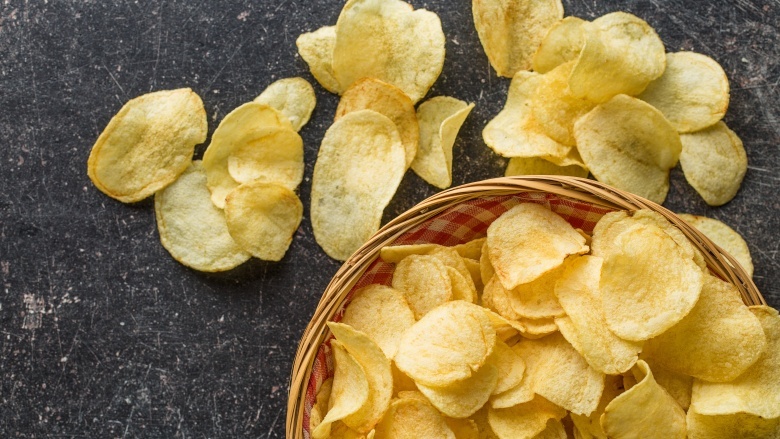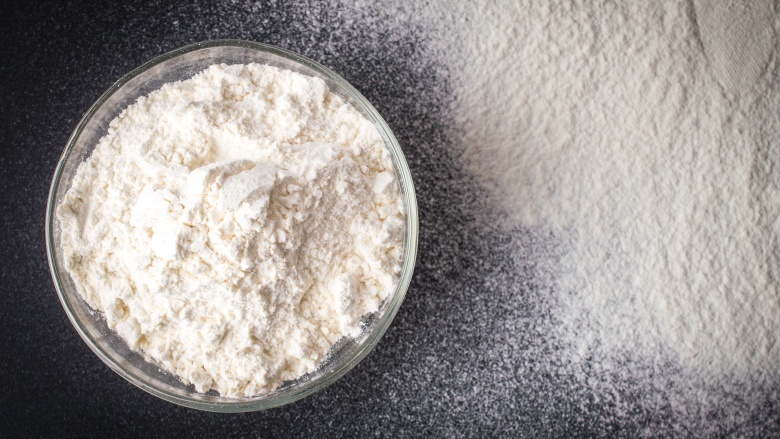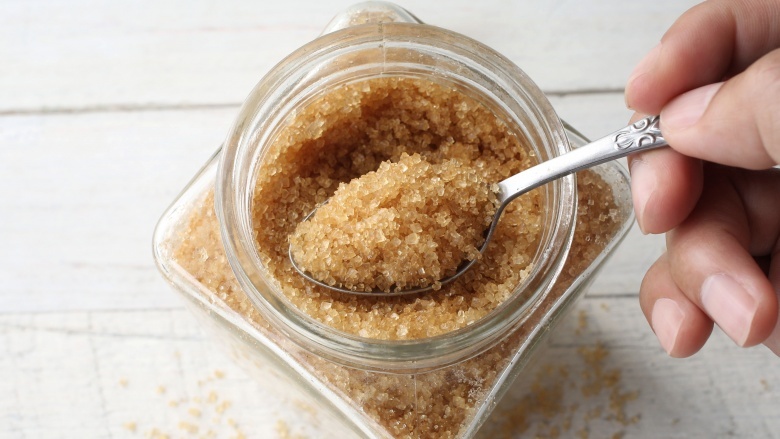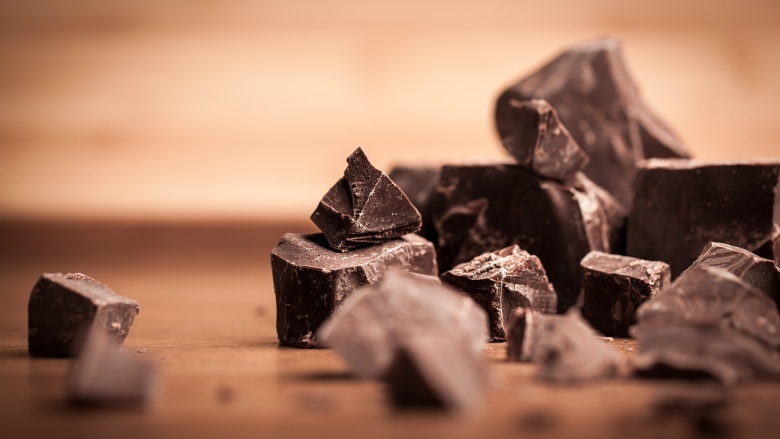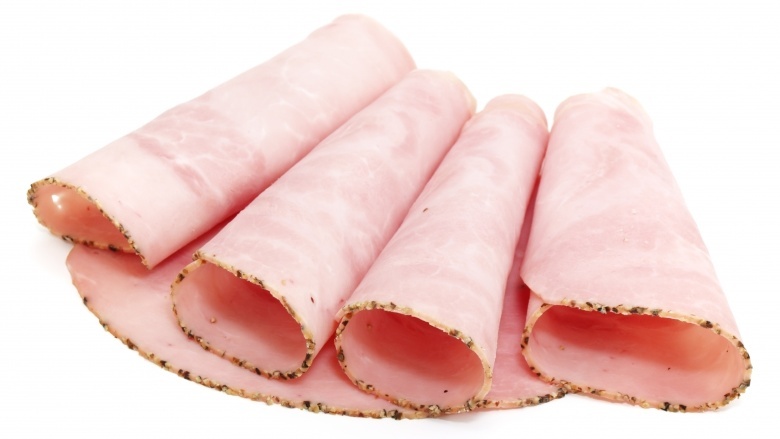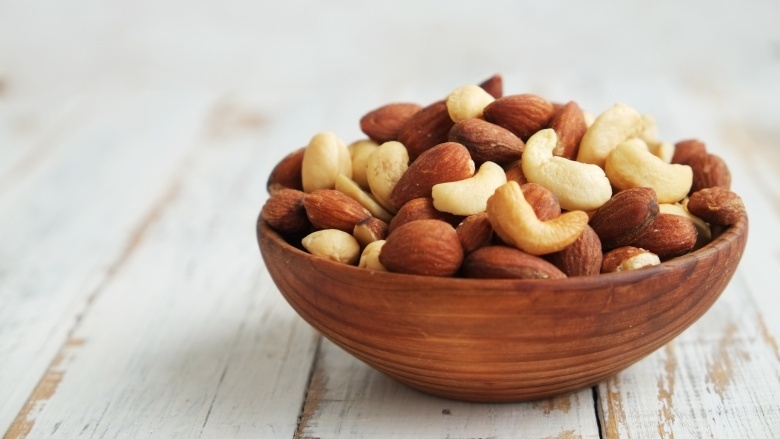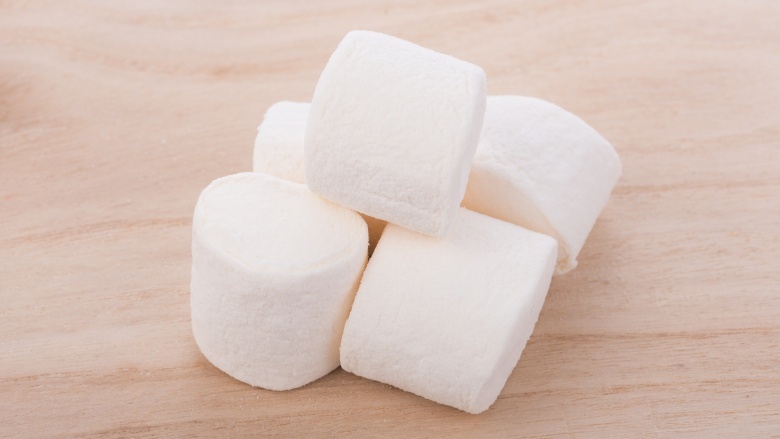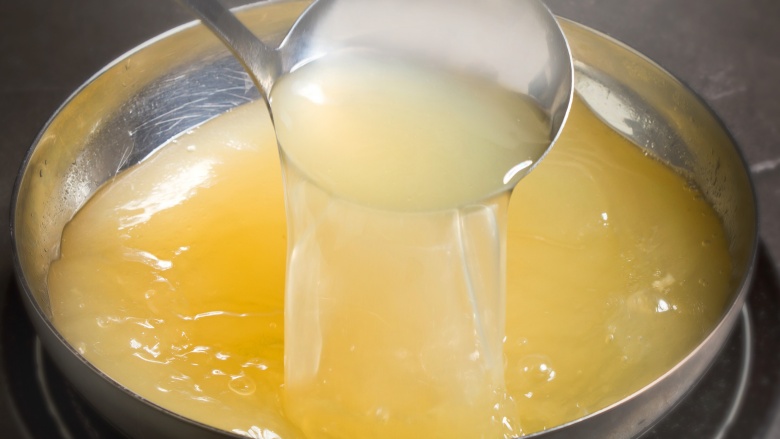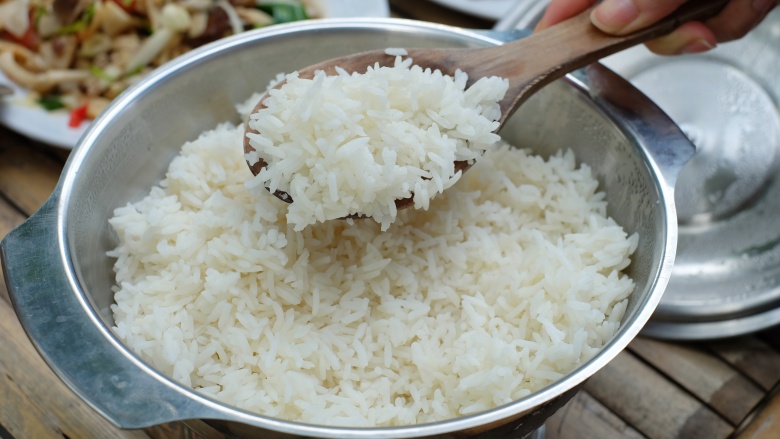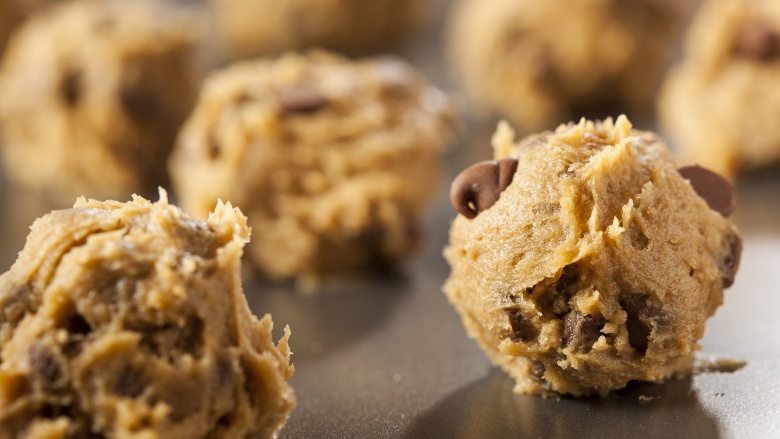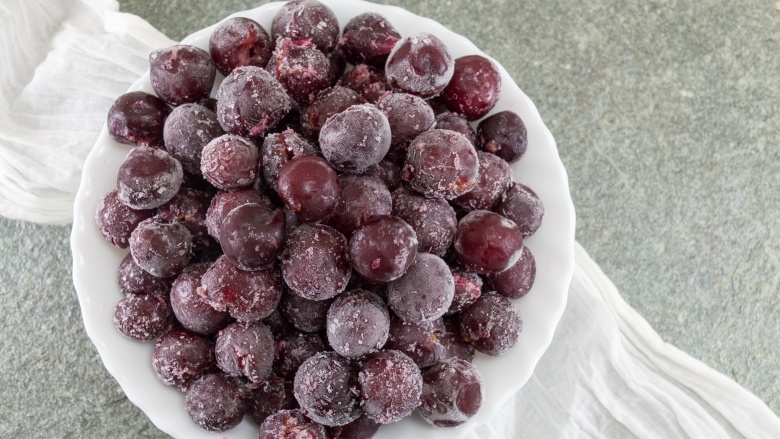Food You Didn't Know You Could Freeze
There are some foods that we're all fairly confident will stand up to the freezer. Bought too much meat? No problem — freeze what you don't need for later. Is your favorite bread on sale? Stock up and throw the extra loaves in the freezer right away. But I'm guessing there are some other foods you aren't freezing that you should be. Instead of letting these foods go to waste, start storing them in the freezer for a rainy (or very busy) day.
Hummus
Hummus is one of my favorite foods to freeze. The good stuff isn't cheap, so when it goes on sale, I tend to buy way more than I can eat. If you're freezing store-bought stuff, freeze it in the sealed container. If it's homemade, drizzle some oil on top before freezing it in an airtight container. Both varieties may separate a bit when they thaw, but a quick stir will set things right.
Cooked pasta
We all know how easy it is to make enough pasta for your whole street when you're only cooking for a family of four, so it's a good thing you can freeze the leftover pasta you aren't able to use. Pasta freezes a little better when it's cooked al dente beforehand, and drizzling it with olive oil before you freeze it can help it keep from sticking together when you thaw it out.
Eggs
The good news is, you can freeze your uneaten eggs. The bad news, though, is that you'll have to do a little bit of work to get it done right. Eggs shouldn't go in the freezer while still in their shells. Water expands when it freezes, meaning frozen eggs have the potential to crack. Cracked eggs can be contaminated by bacteria.
Instead, crack eggs open and beat them together to mix. Pour the mixture into an ice cube tray, with about 3 tablespoons of the mixture in each section, and transfer to a freezer bag for later use. Egg whites can be frozen in trays as well — this time 2 tablespoons per section. Egg yolks alone, however, should be mixed with a dash of salt or sugar to keep their texture from getting too gelatinous when they're eventually thawed. Yolks should be frozen in servings of 1 tablespoon.
Cheese
While it's totally safe to freeze cheese, it doesn't work with every variety — freezing some cheese makes it dry and crumbly. This doesn't affect processed, hard, or aged cheeses quite so much, so feel free to toss your excess of those types in the freezer. Cheese that has been frozen is best when used for cooking, since the melting process will negate any effects of the freezing.
Salad greens
Salad greens somehow tend to go to waste pretty quickly in the fridge. Your good intentions at the grocery store don't always stick once you're back at home with a cabinet full of carbs, right? I get it. It is possible to freeze those greens you don't use, but they won't be salad-worthy when they thaw. Instead, freeze the leaves in small batches (cooked or raw) and use them in smoothies, tossing them in the blender while they're still frozen.
Avocados
Once those avocados are ripe you have about a day to use them before they turn to mush. So what happens when you have a handful of them that ripen all at once? Unless you're in the mood for giant batch of guacamole, you might end up pitching them. Lucky for you, you'll never have to do that again because you can actually freeze avocados. To freeze halves of avocados, just halve, peel, and seed the avocados, then brush them lightly with lemon juice to prevent browning. Finally, wrap them very tightly in plastic wrap. You can also mash the avocados with a splash of lemon juice and place that in a freezer bag. Once thawed, they probably won't be good to eat sliced, but they're great in any recipe that calls for mashed or chunked avocado.
Butter
Unless you're in the middle of a baking frenzy, there's only so much butter you can use at one time. So if you find yourself with a little extra on hand, don't be afraid to freeze it. For best results, freeze it in the container it came in. If it's been opened, though, you can seal it with foil or plastic and place it in an airtight container. Salted butter will freeze for up to nine months, and unsalted for five.
Chips
When was the last time you looked at the expiration date on a bag of chips? You might be surprised to find out they don't last as long as you think. Instead of ending up with stale chips, store the extras in the freezer. If you have unopened bags of chips, you can freeze them in their original packaging. If the bags are already opened, seal them in freezer bags and cover with foil. They'll only take a few hours to thaw on your kitchen counter, and they'll taste just as good as they day you bought them. This tip works for crackers, too, so no need for those to go to waste, either.
Flour
Flour is not as shelf-stable as some people like to think. In fact, some varieties, like whole-grain, can go rancid pretty quickly. Both whole-grain and all-purpose flours can be stored in the freezer to extend their shelf life, and then used as normal when thawed. Before you start baking, though, bring the flour back to room temperature — cooking with cold flour can change the consistency of your baked goods.
Brown sugar
It doesn't take long for brown sugar to harden when it's sitting on a shelf in your pantry. If you have more than you'll use quickly, wrap it in plastic wrap then seal it in a freezer bag or cover it with foil. Miraculously, it'll be nice and soft once you thaw it out.
Chocolate
It's basically sacrilege to throw away chocolate, so if you have some lying around that you're not going to eat (apparently this happens to people?), store it in the freezer so you'll have it when you need it. To do it without ruining the precious chocolate, place it in an airtight container to keep it from oxidizing, then start it out in the fridge — temperature shock could ruin the texture. After a full 24 hours, it's safe to place in the freezer and can stay for six months to a year. When you're ready to thaw, do the whole thing in reverse, keeping in the fridge for 24 hours before moving it to a room temperature setting.
Lunch meat
All you brown-baggers are about to be very happy. We all know raw beef and chicken are great in the freezer, but did you know lunch meat can be frozen as well? If your lunch meat is still sealed in its package, it's freezer-ready. If it's been opened or it's not in an airtight container, seal it in a freezer bag. It'll be good for up to two months.
Nuts
I'll admit it, I didn't always know that nuts can go bad. But unfortunate experiences have taught me that they start to taste a little iffy after a few months. They're still safe, just not as tasty. Thankfully, you can store them in the freezer and they'll retain their delicious taste for up to two years.
Marshmallows
There's nothing like fresh marshmallows. Unfortunately, that freshness doesn't last very long. It is possible to keep that softness a little bit longer by storing them in the freezer until you need them. Bonus — frozen marshmallows can be easily cut with a knife. Anyone who's ever used marshmallows for a Pinterest food craft knows that's a major win.
Now that you know all these tricks, it might be time to invest in a bigger freezer — or at least start stocking up on different foods.
Stock
Making your own stock is great and incredibly useful in cooking, but it doesn't keep long in the fridge. It does, however, keep very well when frozen. Putting stock into ice cube trays means a convenient source of stock that also defrosts faster than stock frozen in freezer-safe bags or containers. Ice cube trays vary, but each cube will be about 1 ounce or 2 tablespoons of stock (measure when you're filling them to check your own tray), making it easy to get the right proportions in recipes. Just make sure your guests know you have stock in the ice trays: nothing quite ruins a vodka and orange like slowly melting cubes of chicken stock.
Cooked rice
It's a dilemma. Prepackaged cooked rice is convenient, but expensive. Raw rice is cheaper but a hassle to cook in a hurry for a simple use. The solution? If you cook up a batch of rice, you can divide it into freezer-safe bags or containers of your chosen serving size and keep them in the freezer for ready use. It's usually best frozen in a thin flat layer in a resealable bag and can be used straight from the freezer: thawing in the fridge can create a mushier result than simply reheating in the microwave or stovetop from frozen.
Just pop the rice and a tablespoon or so of water into a microwave-safe bowl and microwave it for about a minute or heat it in a saucepan over low heat. Frozen cooked rice also works great when added straight into a sauce or casserole, or used as the basis for fried rice. This technique works with all your favorite cooked grains: barley, farro, wheat berries, rye berries, millet, buckwheat and even quinoa.
Cookie dough
Sometimes you need quick cookies. Maybe you're having surprise guests or family over. Maybe you've had a bad day or just a sudden craving. Don't settle for store-bought cookies when you can have cookie dough on hand anytime in the freezer. They may take a couple more minutes in the oven, but that's more than compensated by the convenience of quick, fresh cookies.
For chunky cookies like chocolate chip, it's best to portion them out into balls before freezing them and store them in a freezer bag, then pop as many in the oven as you need. For smoother cookie dough, you can store it in a log wrapped in wax paper. This kind of dough tends to be more crumbly, so best to let it defrost in the fridge for a few hours or just warm slightly before cutting. Cut-out cookie dough for sugar cookies and the like can be frozen in a disc like pie crust, then thawed just enough to be cut into shape.
Grapes
Grapes are an amazing fruit, and they freeze well if you want to keep them for longer. But freezing grapes isn't just about increasing their shelf life. Frozen grapes in and of themselves are a delicious and refreshing summer snack. All you need to do is remove the stems and rinse the grapes, pop them into a freezer bag, and take them out whenever you want.
Eating frozen grapes is a whole different experience than unfrozen grapes, more like eating little popsicles which slowly thaw tastily into your mouth. Even better, they're guilt-free at around 100 calories a cup. For a healthy summer snack, you can't go past frozen grapes. Seedless grapes perhaps work the best, but there's nothing wrong with seeded varieties either. Some even add sugar or a sweetener to the grapes before freezing, but a lot of varieties are perfectly sweet enough as they are.
Speaking of frozen grape products, you can also store leftover wine in your ice cube trays for making a sauce or stew or even a quick and easy sangria or wine slushie. Just don't get it confused with your frozen stock.
